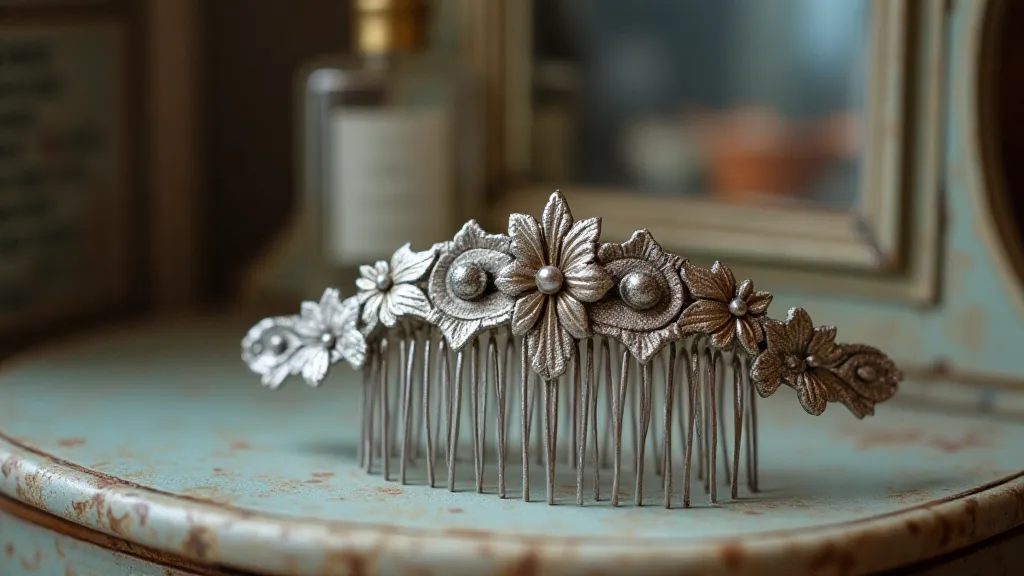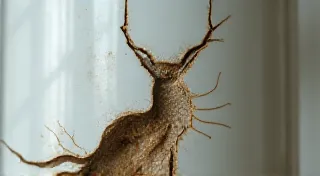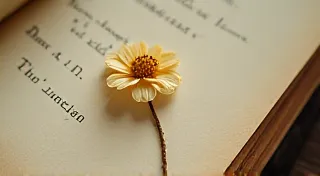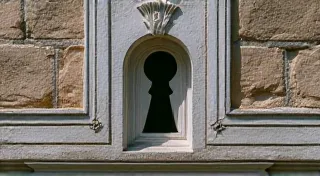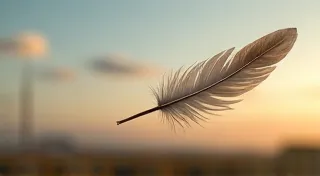The Collector’s Oath: Responsible Acquisition and Preservation of Vintage Combs
There's a peculiar magic in holding a vintage hair comb. It's not just the shimmer of celluloid or the gleam of inlaid pearl; it’s the echo of a hand, long gone, that carefully positioned it within a meticulously crafted hairstyle. It’s the whisper of a social event, a wedding, a moment in time frozen within the delicate teeth and ornate decoration. For those of us drawn to collecting these beautiful objects, it’s a calling – one that demands not just passion, but also a solemn oath: a commitment to responsible acquisition and preservation.
My own journey began quite unexpectedly. I was browsing an antique market, initially searching for Art Deco jewelry, when a flash of tortoiseshell caught my eye. It was a simple comb, its teeth elegantly carved, the shell possessing a warm, honeyed glow. Something about its quiet beauty resonated within me. I bought it on a whim, and that single comb opened a door to a world of artistry, history, and a profound sense of connection to the past.
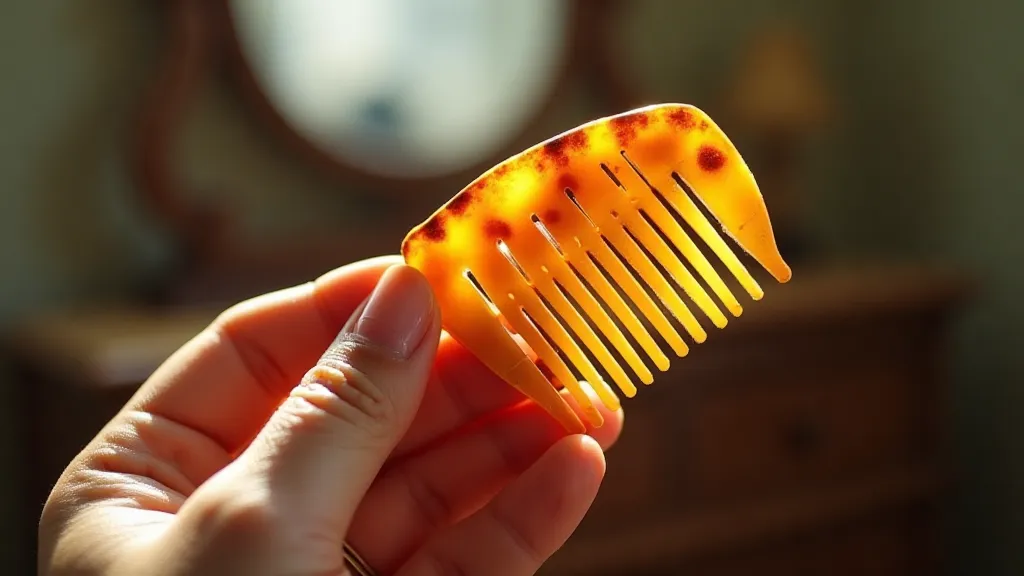
A Glimpse into the Past: Hair Combs Through the Eras
The history of hair combs is intricately woven with the evolution of hairstyles and societal norms. From ancient Egypt, where combs were crafted from ivory and wood to remove lice and adorn hairstyles, to the elaborate, jewel-encrusted combs of the French court, these accessories have always been more than mere functional tools. The Victorian era, in particular, saw an explosion in the variety and artistry of hair combs. Jet, horn, celluloid, and early plastics were all employed, each lending a unique texture and aesthetic. The Edwardian period embraced the “Gibson Girl” look, requiring long, flowing hair secured with ornate, often jeweled combs. The roaring twenties brought a shift towards more streamlined designs, reflecting the Art Deco movement’s emphasis on geometric shapes and luxurious materials. Understanding these historical contexts adds another layer of appreciation for the combs we collect.
The Ethical Collector: Provenance and Respect
The pursuit of beauty shouldn’s be divorced from responsibility. The most ethical collectors understand that these objects carry a history, and we have a duty to respect that heritage. Provenance—the documented history of ownership—is increasingly important. While a complete, unbroken chain of ownership is rare, even fragments of information can enrich our understanding of a comb's journey. Imagine uncovering a faded photograph tucked within the comb’s storage box, a glimpse of the woman who originally wore it! It transforms the object from a beautiful artifact into a tangible link to a person’s life.
Unfortunately, the antique market isn’t always pristine. Some items may have been acquired through less than ethical means, potentially looted from cultural heritage sites or obtained without proper documentation. Asking questions about the vendor's sourcing practices, researching the object’s history, and supporting reputable dealers are essential steps towards responsible collecting. Being willing to walk away from a deal if concerns arise demonstrates a commitment to ethical principles.
The Fragility of Time: Conservation and Preservation
Vintage hair combs are inherently fragile. Years of handling, storage, and exposure to the elements can take their toll. Celluloid can crack and become brittle, pearl can lose its luster, and intricate carvings can become damaged. As collectors, we are the custodians of these treasures, tasked with safeguarding them for future generations. The good news is, most preservation efforts are surprisingly simple.
Avoid direct sunlight and extreme temperatures, which can accelerate deterioration. Store combs individually, wrapped in acid-free tissue paper within a box lined with soft fabric. Cleaning should be done sparingly and with utmost care. A soft brush can remove surface dust, but avoid harsh chemicals or abrasive cleaners. When in doubt, consult a professional conservator specializing in antique accessories. Small interventions – careful cleaning, gentle repairs – can significantly extend the life of a comb.
I recall once acquiring a beautiful black jet comb, its teeth significantly chipped. The previous owner had attempted a repair with superglue, which had yellowed and made the damage even more noticeable. After careful research, I consulted with a specialist who painstakingly removed the old glue and, using a reversible adhesive, gently reattached the broken teeth. The result was a significant improvement, restoring the comb’s elegance without compromising its integrity.
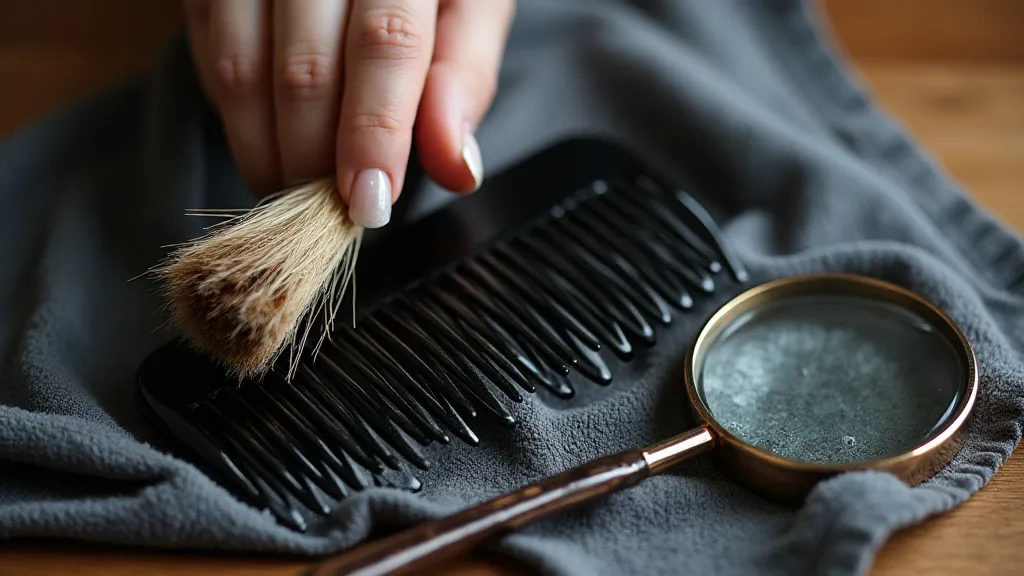
Beyond the Acquisition: Supporting Sustainable Practices
The desire to collect beautiful objects can inadvertently contribute to unsustainable practices. The demand for vintage items can, in some cases, encourage looting and the destruction of heritage sites. As responsible collectors, we can actively support sustainable practices that protect cultural heritage.
This includes supporting dealers who prioritize ethical sourcing, advocating for stricter regulations regarding the trade of antiquities, and educating others about the importance of responsible collecting. It also means being mindful of the environmental impact of our collecting habits – reducing our reliance on shipping and packaging, and choosing sustainable storage solutions.
A Connection to Humanity: The Enduring Beauty of Vintage Combs
Collecting vintage hair combs is more than just acquiring beautiful objects. It's about connecting with the past, appreciating the artistry of previous generations, and recognizing our role as stewards of cultural heritage. It's about honoring the women who wore these combs, the craftsmen who created them, and the history they represent. The “Collector’s Oath” isn’t just a set of rules; it's a commitment to acting with integrity, responsibility, and a deep respect for the enduring beauty of these remarkable treasures.
